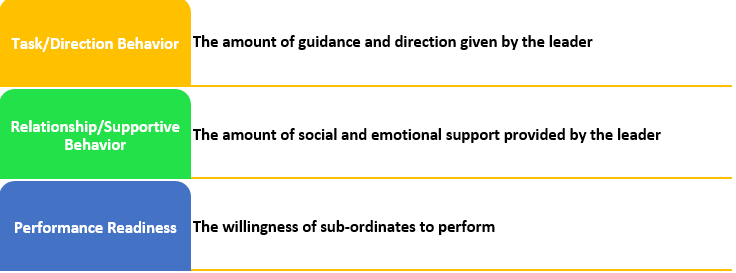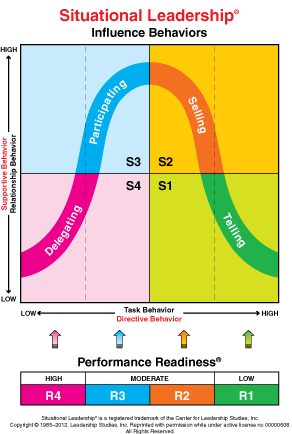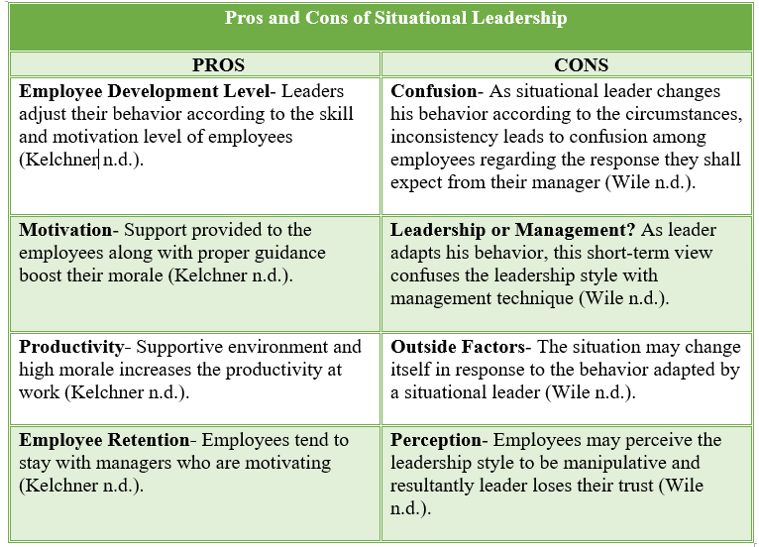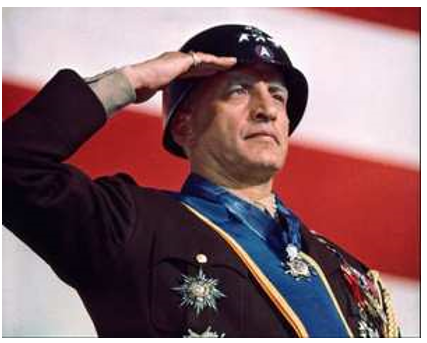
“Which personal style should managers adopt to ensure success? What is the most effective approach to managing the work of subordinates? These questions have been extensively researched and debated over the last century, and while the general consensus has moved away from ‘command and control’ to management and leadership towards more consultative and participative approaches, there is no single ideal, as the best approach may vary according to circumstances and individual characteristics” (CMI 2013).
A very fine line distinguishes between ‘Do it!’ and ‘Let’s go do it!’ but the impact each has differ considerably. While both leadership and management are inseparable and must go hand-in-hand to run a business smoothly, but they are very different from each other (Anon n.d.a). Similarly, there are different types of leadership and management styles. According to CMI, there is no single ideal and the best approach to effective leadership may vary according to circumstances and individual characteristics.
This blog discusses the differences between Leader and Manager and various kinds of Leadership styles. It further discusses the Situational Leadership framework along with its advantages and drawbacks and highlights the situational leadership demonstrated by two famous leaders – Jack Stahl (former CEO of Coca Cola and Revlon) and General George Patton (high-ranked US military officer).
| LEADER |
Vs. |
MANAGER |
| Develops and Innovates | Monitors and Maintains | |
| Concentrates on people | Focuses on things | |
| Inspires trust | Depends upon controls implemented | |
| Motivates others | Orders others | |
| Does the right thing | Does things right | |
| Brings new ideas | Copies the tradition |
Despite such distinctive features, it will be wrong to say that a good manager does not need to be a good leader or a good leader does not need to be a good manager. For example, when an organization sets a certain financial target, although it’s a manager’s job to supervise the progress but it also requires that manager to lead the team and motivate them towards the achievement of the target set (Ratcliffe 2013).
LEADERSHIP STYLES
Leadership style can be either of the following (Johnson n.d.):
Autocratic style gives managers the entire control over decision making with no input from sub-ordinates.
Democratic or Participative style also gives managers the decision making power but input from every individual is welcomed and given due importance.
Laissez-faire or Genuine style enables the employees to work without direct supervision from the managers.
But out of the above three leadership styles, I believe that every situation demands a separate set of leadership skills as demonstrated by the Situational Leadership theory.
SITUATIONAL LEADERSHIP THEORY
The situational leadership framework was developed by Dr. Paul Hersey in 1960s and is the most flexible model that allows leaders of every kind to influence others. It is based on the following three factors


According to this framework, a leader may be following one of the following styles at a particular point in time
Telling – One-way communication. Decision is made by leaders and sub-ordinates are expected to accept them. It works well in disastrous situations requiring close supervision.
Selling – Decision is made by leaders but suggestions are welcomed. Leaders ‘sell’ their ideas to gather support.
Participating – Leader is involved in decision-making but ultimate decision is made by sub-ordinates.
Delegating– When the task is delegated to the team without stringent direction and socioemotional support (Sphar 2015).
A situational leader learns to demonstrate four core competencies (The Centre for Leadership Centre n.d.)

PROS AND CONS OF SITUATIONAL LEADERSHIP

JACK STAHL’S LEADERSHIP STYLE

Jack Stahl, former President of Coca Cola and CEO of Revlon, demonstrates situational leadership style. During his initial career stages, his mentor Ivester asked him to prepare a prospectus for Coca Cola bottling division’s public offer. Stahl delegated the task but got into trouble as the draft was not up to the mark. Both had to work together overnight to complete the project by the deadline. From this experience, Stahl learned and later incorporated in his leadership skills that delegating work to others does not free a leader, but a close supervision is also required for effective performance (Nayab and Edward 2011).. He brought companies to profits through his detail-oriented approach, delegating the work and trusting others but also by stepping back when necessary i.e. leading according the arising situations (Anon n.d.b). Stahl believes that leadership is highly dependent upon the situations. In the morning, he may focus on the long-term business goals and by the afternoon, he may be focusing on the details.
(The Street.com 2007).
GENERAL GEORGE PATTON’S LEADERSHIP STYLE

Another example is of US military’s General George Patton who not only led his army in battlefield but also wrote papers on war strategy as a guidance to his army. His famous quote is “A leader is a man who can adapt principles to circumstances” His philosophy for winning the war was to concentrate on analysing the current situations and then plan the course of action to be taken. He also believed in amending the plans to cater the unexpected situations – trait of a situational leader (Dems and Edwards 2010).
Thus, I choose to agree with CMI’s viewpoint that there is no single way to effective leadership. It always depends upon the circumstances such as the nature of task and skill level of employees. I might like someone to lead me in situations regarding which I have no prior experience. On the other hand, I may want to do tasks on my own where I am confident about my expertise. Thus the key is to analyse the situation and then decide on the leadership style to be adopted.
References
Anon, (n.d.a) ‘What is the Difference Between Management and Leadership?’. The Wall Street Journal available from http://guides.wsj.com/management/developing-a-leadership-style/what-is-the-difference-between-management-and-leadership/ [10 August 2016]
Anon, (n.d.b) ‘Famous Participative Leaders’ [online] available from http://www.adviseamerica.com/famous-participative-leaders/ [12 August 2016]
Dems, K. and Edwards, G. (2010) ‘A Look at the Situational Leadership Model’ [online] available from http://www.brighthub.com/office/home/articles/83323.aspx [11 August 2016]
Johnson, R. (n.d.) ‘5 Different Types of Leadership Styles’ Huston Chronicle available from http://smallbusiness.chron.com/5-different-types-leadership-styles-17584.html [9 August 2016]
Kelchner, L. (n.d.) ‘Situational Leadership and Its Effectiveness in Leading an Organization’ Huston Chronicle available from < http://smallbusiness.chron.com/situational-leadership-its-effectiveness-leading-organization-26324.html> [11 August 2016]
Nayab, N. and Edward, G. (2011) ‘Five Real-World Examples of Successful Leadership’ available from http://www.brighthubpm.com/resource-management/120498-five-real-world-examples-of-successful-leadership/ [11 August 2016]
Ratcliffe, R. (2013) ‘What’s the difference between leadership and management? The Guardian 29 July available from https://www.theguardian.com/careers/difference-between-leadership-management> [9 August 2016]
Spahr, P. (2015) ‘What is Situational Leadership? How Flexibility Leads to Success’ available from http://online.stu.edu/situational-leadership/ [10 August 2016]
The Centre of Leadership Studies, (n.d.)’ Situational Leadership’ available from https://situational.com/the-cls-difference/situational-leadership-what-we-do/ [10 August 2016]
The Street.com, (2007). ‘Former Coke, Revlon Chief on How to Be a Leader’ [online] available from https://www.youtube.com/watch?v=4y2yYqkCXyg [11 August 2016]
Wile, E. (n.d.) ‘Negatives of a Situational Leadership Style’ Huston Chronicle available from < http://smallbusiness.chron.com/negatives-situational-leadership-style-18606.html> [11 August 2016]
Good discussion on management style.
LikeLiked by 1 person
Fahad well described situational leadership . Well discussed pros and cons of situational leadership.
LikeLike
Another good blog to read. Well explained different attributes of leadership style.
LikeLike
Thank you for your comments much appreciated .
LikeLike
Well you have given a really good insight on leadership theories.
LikeLike
Hi Fahad good to see some very informative Blog on leadership style. I will surely adopt &apply them on my career growth.
LikeLike
Thank you Saud . I am glad that you can adapt this theory in your career growth.
Thank you karma for your feedback.
LikeLike
Fahad yet again another good blog.
You have demonstrated good knowledge different leadership style.
Would you mind asking me what is your leadership style.?
LikeLike
Thank you javeria92. I am glad that you like my blogs. Well my 5th blog actually tells about the leadership style of mine. I would advise you to read it. However in a nutshell, my style of leadership is “Situational Leadership”.
LikeLike